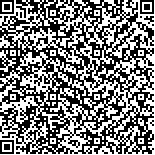| Quote
: |
杨华, 冯洁, 苏燕波, 段杨丽, 郑添明.艾灸对腹泻型肠易激综合征大鼠肠道损伤的改善作用及MLCK/MLC2信号通路的影响[J].湖南中医药大学学报英文版,2025,45(3):467-473.[Click to copy
] |
|
| |
|
|
| This paper
:Browser 1165times Download 561times |
| 艾灸对腹泻型肠易激综合征大鼠肠道损伤的改善作用及MLCK/MLC2信号通路的影响 |
| 杨华,冯洁,苏燕波,段杨丽,郑添明 |
| (桂林市人民医院消化内科, 广西 桂林 541002) |
| 摘要: |
| 目的 探讨艾灸对腹泻型肠易激综合征(IBS-D)大鼠肠道炎症及肠道损伤的改善作用及肌球蛋白轻链激酶(MLCK)/肌球蛋白调节性轻链2(MLC2)信号通路的影响。方法 构建腹泻型肠易激综合征大鼠模型并将其随机分为模型组、阳性对照组(匹维溴铵组,15 mg·kg-1)、艾灸组、艾灸+MLCK/MLC2通路激活剂iE-DAP组(艾灸+iE-DAP组,3.5 mg·kg-1),每组12只。另取12只健康大鼠作为对照组。对所有大鼠进行腹泻等级评分并检测粪便含水量;HE染色法检测结肠组织病理变化;TUNEL染色法检测结肠组织细胞凋亡情况;RT-qPCR法检测结肠组织中白细胞介素-6(IL-6)、肿瘤坏死因子-α(TNF-α)和白细胞介素-10(IL-10)mRNA表达水平;免疫组化法检测结肠组织闭锁小带蛋白-1(ZO-1)、紧密连接蛋白1(Claudin 1)蛋白含量;Western blot检测结肠组织MLCK、p-MLC2和MLC2蛋白表达量。结果 与对照组相比,模型组大鼠肠黏膜完整性受损、炎性细胞浸润加重,腹泻评分、粪便含水量、结肠组织细胞凋亡占比、IL-6和TNF-α mRNA表达水平、p-MLC2/MLC2和MLCK蛋白表达水平升高(P<0.05),IL-10 mRNA表达水平以及结肠组织中ZO-1和Claudin-1蛋白含量显著下降(P<0.05);与模型组相比,匹维溴铵组和艾灸组大鼠结肠组织病理损伤减轻、炎症细胞浸润减少,腹泻评分、粪便含水量、结肠组织细胞凋亡占比、IL-6和TNF-α mRNA表达水平、p-MLC2/MLC2和MLCK蛋白表达水平降低(P<0.05),IL-10 mRNA表达水平以及结肠组织中ZO-1和Claudin-1蛋白含量升高(P<0.05);与艾灸组相比,艾灸+iE-DAP组大鼠结肠组织病损加重、炎症细胞浸润增强,腹泻评分、粪便含水量、细胞凋亡占比以及炎性因子表达水平明显上调,iE-DAP增加了p-MLC2/MLC2和MLCK蛋白的表达量(P<0.05)。结论 艾灸可通过抑制MLCK/MLC2信号通路减轻机体炎性反应、减少细胞凋亡、增强肠道屏障物理防御功能,从而改善IBS-D大鼠的结肠组织病损、减轻腹泻。 |
| 关键词: 腹泻型肠易激综合征 艾灸 炎性反应 肠道损伤 肌球蛋白轻链激酶/肌球蛋白调节性轻链2信号通路 |
| DOI:10.3969/j.issn.1674-070X.2025.03.011 |
| Received:October 14, 2024 |
| 基金项目:广西壮族自治区中医药管理局项目(GXZYC20230613)。 |
|
| Ameliorative effects of moxibustion on intestinal damage in rats with diarrhea-predominant irritable bowel syndrome and its impact on MLCK/MLC2 signaling pathway |
| YANG Hua, FENG Jie, SU Yanbo, DUAN Yangli, ZHENG Tianming |
| (Department of Gastroenterology, Guilin People's Hospital, Guilin, Guangxi 541002, China) |
| Abstract: |
| Objective To explore the ameliorative effects of moxibustion on intestinal inflammation and damage in rats with diarrhea-predominant irritable bowel syndrome (IBS-D) and its impact on the myosin light chain kinase (MLCK)/myosin regulatory light chain 2 (MLC2) signaling pathway. Methods A rat model of IBS-D was established and the rats were randomly divided into a model group, a positive control group (pinaverium bromide group, 15 mg·kg-1), a moxibustion group, and a moxibustion+MLCK/MLC2 pathway activator iE-DAP group (moxibustion+iE-DAP group, 3.5 mg·kg-1), with 12 rats in each group. Another twelve healthy rats were selected as the control group. All rats were scored for diarrhea grade and the fecal water content was measured. HE staining was used to determine the pathological changes of colon tissue. Apoptosis in the colon tissue was examined by TUNEL staining. RT-qPCR was used to measure mRNA expression levels of interleukin-6 (IL-6), tumor necrosis factor-α (TNF-α), and interleukin-10 (IL-10) in colon tissue. Immunohistochemistry was used to determine the protein levels of zonula occludens 1 (ZO-1) and tight junction protein 1 (Claudin 1) in colon tissue. Western blot was used to measure the protein expression levels of MLCK, p-MLC2, and MLC2 in colon tissue. Results Compared with the control group, the rats in the model group exhibited impaired intestinal mucosal integrity and aggravated inflammatory cell infiltration. The diarrhea score, fecal water content, proportions of colonic tissue apoptosis, mRNA expression levels of IL-6 and TNF-α, and protein expression levels of p-MLC2/MLC2 and MLCK increased (P<0.05), while the IL-10 mRNA expression level as well as the protein content of ZO-1 and Claudin-1 in colon tissue decreased (P<0.05). Compared with the model group, the rats in the pinaverium bromide group and the moxibustion group showed reduced histopathological damage and inflammatory cell infiltration in the colon tissue. The diarrhea score, fecal water content, proportion of apoptotic cells in colon tissue, mRNA expression levels of IL-6 and TNF-α, protein expression levels of p-MLC2/MLC2 and MLCK decreased (P<0.05), while the mRNA expression level of IL-10 and the protein content of ZO-1 and Claudin-1 in colon tissue significantly increased (P<0.05). Compared with the moxibustion group, the rats in the moxibustion+iE-DAP group exhibited exacerbated colon tissue damage and enhanced inflammatory cell infiltration. The diarrhea score, fecal water content, proportion of apoptotic cells and the expression levels of inflammatory factors remarkably increased, and iE-DAP increased the protein expression levels of p-MLC2/MLC2 and MLCK (P<0.05). Conclusion Moxibustion can alleviate the body's inflammatory response, reduce cell apoptosis, and enhance the physical defense function of the intestinal barrier by inhibiting the MLCK/MLC2 signaling pathway, thereby relieving colon tissue lesions and alleviating diarrhea in rats with IBS-D. |
| Key words: diarrhea-predominant irritable bowel syndrome moxibustion inflammatory response intestinal damage myosin light chain kinase/myosin regulatory light chain 2 signaling pathway |
|

二维码(扫一下试试看!) |
|
|
|
|


